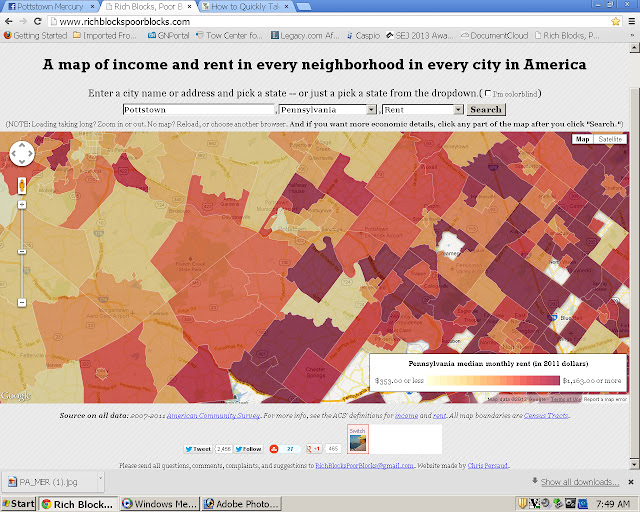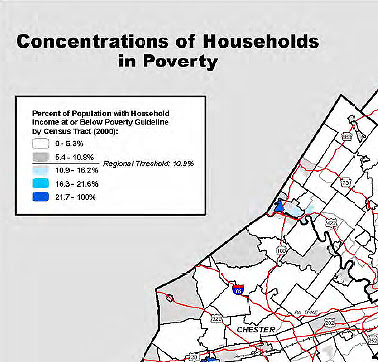![]() |
Photo by Evan Brandt
Iron expert Dan Graham talks to a crowd of more than 40 during a March 9 lecture at Pottstown's own Pottsgrove Manor all about the early American iron industry. |
You may be under the impression that the birthplace of the American Revolution was in Boston, or Philadelphia, or maybe Virginia.
You would be wrong.
It actually began in Pine Forge, Berks County, or Sweden.
It's all in how you look at it.
Iron expert Dan Graham has a particular perspective on these things and it has to do with iron stoves, mercantilism and Pennsylvanian gumption.
![]() |
Photo by Evan Brandt
In case you're wondering, this is a "fireback," a plate of iron which protected the rear of the fireplace and reflected heat back into the room. This one is on display at Pottsgrove Manor. |
In 1682, there were no iron works in Pennsylvania, although there were a few in Massachusetts and Virginia, Graham told a packed house at Pottsgrove Manor.
![]() |
Photo by Evan Brandt This "fireback" was plainly made by John Potts
in 1743 and is on display at Pottsgrove Manor. |
Those that were there, produced pig iron and shipped the bars overseas to be made into useful products, such as stove plates and "firebacks."
But much of the bar and wrought iron that made its way back to the British colonies at the time, and at a significant mark-up in price, came from Sweden.
Then, in 1714, Britain's Queen Anne died without an heir and the Act of Succession, inspired by the recent brutal religious civil wars, required that the next arse to sit on the British thrown be a Protestant one.
![]() |
| George I of Britain |
Parliament settled on George, the elector of Hanover in the Germanic states, who became George I.
George just happened to be at war with Sweden when he came to the British throne, and he just happened to have a navy, which blockaded Swedish ports and created a sudden shortage of iron in the colonies.
Along comes Thomas Rutter, a minister and blacksmith in Germantown, who is also a member of the Pennsylvania Assembly at the time.
He realizes what all this means -- opportunity.
Rutter leases 100 of the easternmost of the 500 acres known, ironically, as the "Swedes tract," and starts a "blooming forge" in Pine Forge, along the banks of the appropriately named Ironstone creek.
It was called a "blooming forge" because the iron was extracted from the rusting ore that stuck up from the ground in this part of Berks, Chester and Montgomery counties and crudely formed into a lump at the forge that some said looked like the blooming of a flower, according to Graham.
He takes this lumpy iron to the Philadelphia merchants and says "look what I've got, I can make iron," said Graham.
The only merchants who had enough money to invest in this enterprise were Quakers and they did. With that money, Rutter built the Colebrookdale Furnace in 1720 and turned Pine Forge from a blooming forge into a refining facility.
"Poole Forge" is soon added to the empire and Rutter and his partner, Thomas Potts (father of Pottstown's John Potts), "figure out they don't need to send their iron to England to be made into merchandise, and they begin making firebacks and stove plates," Graham explained.
There is a letter to parliament in 1732 in which a minister writes of the American colonies that as a result of this iron production and manufacture on our side of the Atlantic "they don't need us. And that's when the American Revolution started," Graham said.
This was certainly not the theme of Graham's talk, which lasted a little more than an hour when the questions and comments are added in, but it does put the importance of the region's iron industry into a proper patriotic context.
![]() |
Photo by Evan Brandt
Part of the new exhibit at Pottsgrove Manor, "Forging a Lifestyle," explains how furnaces work. |
It it important to note here that there is a difference between a "forge" and a "furnace." Forges were simpler operations and made "pig iron," bars so called because after being poured, they were linked together in a row and looked like piglets suckling on a sow.
Forges could be run by two or three people, whereas furnaces required a much bigger-better trained work force that had to be housed and fed.
Furnaces, were in fact, much more complex, sophisticated and expensive operations.
While forges where fairly simple affairs, furnace technology was always changing, Graham said, noting that "the iron industry changed tremendously from 1720 to 1780."
They used resources much more voraciously than a forge.
For example, when it was running at "full blast," Warwick Furnace used an acre of trees a day for fuel, Graham said.
Furnaces, which used a cold blast of air made "cast iron," which is what stove plates were made from.
Cast iron could be made into more intricate shapes and, most significantly to the stove plate industry, allowed for decoration of the plates.
It is made by taking the liquid iron made in a blast furnace and pouring it into a sand mold. The stove plates were an easy to make because they could be done in batches and then screwed together with a long bolt on each corner.
![]() |
Photos by Evan Brandt
A sand mold like this, on display at Pottsgrove Manor, could be used to make a trivet like the one shown below. |
By 1740, much of the output from the furnaces were stove plates. They were easy to make and popular because they were not terribly expensive and had come over the Atlantic with the German immigrants, who preferred them over the English fireplaces which, while romantic, sent most of their heat up the chimney.
Stoves, by contrast used less fuel and produced more heat for the fuel they did use.
In addition to Colebrookdale, the region had numerous furnaces; Warwick, owned by the Nutt family (remembered in a Phoenixville road of the same name), Hopewell, which still stands and was controlled by the Bird family, and Mount Pleasant, run by a man named Thomas Marbury.
Hopewell Furnace National Historic Site in Union and Johanna Furnace, outside Morgantown, are a good representation of how a colonial furnace worked.
Other iron-producing colonies like Virginia and Maryland still shipped most of their iron to England for processing, but Pennsylvania began holding on to it and making their own products which were much less refined than the British iron, but also much less expensive.
A five-plate stove, which was set into the wall opposite a fireplace, cost "one pound," in 1770, whereas a "six-plate stove," which was free-standing and could be set into the middle of a room, cost "five pounds."
A "Franklin stove," which had an open hearth so you could "see the flames," (which he insisted all Englishmen preferred), was "10 pounds."
![]() |
Many German-style stoves, like this one, had Bible verses, which is translated below in the Pottsgrove Manor exhibit. |
The English model for a home had a fireplace at each end of the house, whereas a German model had a stove in the middle and the house was built up around it, Graham said.
Those stoves were simply plates bolted together, the top and bottom plates were smooth and the sides decorate, most often with a quote, motif or theme from the Bible.
After a time, the American plates became less decorated as the furnaces geared up for mass production, skipping the expense of having an artist design pretty pictures for the plates.
Nonetheless, most of the plates often also included the name of the caster and the place and year it was cast, which is why, Graham said, they are a convenient study for historians. All the information is right there.
The earliest stove plate known to have been made in America came from Bucks County and was cast in 1728.
Initially, the stoves were very smokey because there was no seal along the seam where the plates met, but that problem was eventually solved with "rolled iron," which was, quite simply, curled along the edges and made it harder for the smoke to escape.
![]() |
This plate, on display now at Pottsgrove Manor, was made as you can see, by "Rutter & Potts." |
In 1744, Benjamin Franklin, the irrepressible self promoter, published a pamphlet examining the upsides and downsides of the various designs.
While praising the five-plate stove, built into a wall and fueled from the other side of the wall (there is an example of one of these in John Potts' office in Pottsgrove Manor, Franklin wrote that people in a room heated by one are "obliged to breath the same unchanged air continually, mixed with the breath and perspiration from one another's bodies, which is very disagreeable to those who have not been accustomed to it."
![]() |
Whereas this much more sophisticated casting was made in 1795 by Isaac Potts, one of John Potts 13 children. |
Of the six plate stoves, Franklin wrote that they were efficient, caused air to circulate in the room, but added slyly "there is no sight of the fire, which in itself is a pleasant thing. One cannot conveniently make any other use of the fire but that of warming the room. When the room is warm, people, not seeing the fire, are apt to forget supplying it with fuel till it is almost out, then growing cold, a great deal of wood is put in, which soon makes it too hot."
Of his own stove design, completed in 1742, Franklin later wrote that the open front better heated a room, pulled more fresh air, allowed the flame to be seen and utilized.
"I made the present of a model to Mr. Robert Grace, one of my early friends, who, having an iron furnace, found the casting of the plates for those stoves a profitable thing," Franklin wrote in his autobiography.
Grace owned the works at Coventry, which eventually, came under the control of John Potts when it was left to him by his mother-in-law.
By 1760, Potts is "totally involved" in making Franklin stoves for sale.
![]() |
Before mass production halted their use, most stove designs had biblical themes, although this one, also on display at Pottsgrove Manor, seems to feature someone's bedclothes being ripped off.... |
These stoves were, by now, so ubiquitous that rather than only being sold at the furnaces themselves, they were being sold everywhere including, by not-so-striking coincidence, places like Franklin's own print shop as early as 1750.
"By 1770, everybody's selling stoves," Graham said.
There several major furnaces in our area during those days -- Colebrookdale, Thomas Marbury's Mount Pleasant, which was in Barto, and Samuel Nutt's Rock Run, in Chester County -- "and John Potts worked at all three," said Graham.
Eventually, Potts controlled Colebrookdale, Warwick, Coventry and Mount Pleasant. "Much of his empire comes from stove-building," Graham explained.
Eventually, these warming stoves evolved into cooking stoves and slowly edged out the open hearth cooking which had been the staple to cook food for centuries.
The 10-plate stove was introduced around 1760 and were being produced and by 1765 were being produced by Mary Ann Furnace in York County, said Graham.
Used at first primarily as a baking oven, the evolved into stove-top cooking as well and "revolutionized open hearth cooking in America," said Graham.
In 1778, when the British left Philadelphia, the American forces confiscated much of the property of those Pennsylvanians who had stayed during under the rationale that they must have been loyalists.
An inventory of those goods shows that most of the stoves confiscated by them were 10-plate stoves, said Graham.
These stoves continued to evolve into the 1840s, when widespread use of coal ended their usefulness. Coal burned too hot for the cast iron to withstand.



















.jpg)



























































